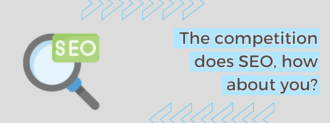Decades ago, only big companies did corporate branding studies, as they were the only ones with the budget to carry it out. Today, however, even the smallest Internet company knows the importance of online branding to reach the goal to have a quality e-commerce. But do we know exactly what branding is?
Table of contents
What is corporate branding?
It’s actually very simple: Branding is the process of studying, elaborating, designing and building a brand. It seems like a lot of things, but it’s actually a very organized process, which goes in stages.
To make a basic digital branding strategy, we must make an online branding plan. And to take the first steps, we must answer these questions
- Added value: Who are you, what do you sell, what do you offer, why is it different from what others offer?
- Brand image: How are you perceived? Here you must take into account the working relationships with and from your online store, customer experience, surveys… In other words, you have to find out what your customers (and non-customers) think of your online business.
- Objectives of your online store: What do you want to achieve? How are you going to do it? They must be measurable goals, by the way. It’s not enough to just say “I want to sell a lot”.
- What will be your ecosystem: Where you move, who buys or will buy from you, what philosophy do you have to reach them and make them buy?
All the answers to these questions should be reflected in your corporate branding through your digital branding strategy. But sometimes you have to do a bit more than that, which is what we’ll discuss in the following part.

Product branding
If in addition to your own store, your products are available on marketplaces such as Amazon, eBay, etc., it’s also advisable to work on product branding. Because if this is the case, you’re not going to be competing with other companies. In this case, your products are going to appear directly in the same showcase along with the competition
Therefore, your branding has to be able to be transferred to your product branding. In other words: your products have to reinforce your brand values. Through your product, you have to provide the user with reasons why they should buy it, so that a purchase preference is created
To get them to chose you, a good product branding must show that what you’re offering is:
- Differential Better than the rest. By components, size, etc.
- Relevant Important to the customer. Solves their needs.
- Credible Obviously, don’t promise or offer what you don’t have.
That is, if your product branding is well done, the user will not even think about it, he will see your items to buy and will prefer them to others. Which, of course, will also be influenced by your corporate branding. If they already know your brand, you’ve already won half the way. Because the other half of the road will depend on your branding strategy.
What is branding strategy?
Now that you already have a corporate branding and even a product branding, if you’re not able to back it up with a strategy to have a quality e-commerce, it won’t do you much good. And this is where, as you can imagine, the branding strategy or strategic branding comes into play.
As we already have the pillars of our brand, with our branding strategy we’re going to see how we can position ourselves in the mind of the (potential) customer. And for this, in addition to investing in SEO, advertising, etc, it’s important to be where our target audience is.
On the one hand, this translates into having presence in social networks and on the other hand, to have good content in our online store, usually through a a corporate blog. In both cases, you’ll have to work your marketing strategy taking into account two fundamental points:
- Use the Emotional marketing: What do you want to say? Analyze the emotions you want to arouse, what are your references, what do you want to be associated with, even abstract concepts… Everything that can help you connect with your customers.
- Define the Communication: You must lay the foundations of how you want to say things and communicate with your customer. How you want to communicate your services and products to your target audience. From knowing how to convey your style, make yourself recognizable.

And now, how do we apply this in our effective branding strategy?
Brand name
If you’re starting from scratch, brainstorm what you want to sell, what you want to convey, and choose from everything that has come out. Let yourself go, don’t discard any idea, no matter how crazy it may seem to you, because from that “weird” one you can get to a valid one.
If you already have a brand name but now it doesn’t convince you anymore, you can do one of two things: if you’ve barely worked on your online branding, you’re still in time to change it. Or add a claim that makes it clearer what you want to convey.
Visual identity
Create a logo that identifies you, whether it’s just text, with a pictogram, isotype… you have a variety of formats to choose from. It will depend on whether you want a simpler or more complicated logo.
Taking into account that it will be one of the first (if not almost the first) factors that impact your audience, we advise you to leave it in the hands of a professional. Since it isn’t just a matter of making a composition, but to make a whole study based on what you want to represent and what is the best way to do it.
Tone of communication
It will depend on the type of products you sell and the profile of your target audience. You’re not going to speak in the same way to a person who is looking to buy a high-end car, than a person who wants to buy packs of party products. The first tone will be more formal, the second more coloquial.
We’re referring to all communication in general: the tone in networks, emails, on your own website, your blog, if you write as a guest in any media … your tone should identify you wherever you go talking about your brand.
Content Marketing
In the end, we always come back to content. Google “feeds on words”. If you don’t tell it what you have, what you offer, you’re going to have a much harder time. So it is advisable to include a text in both, the descriptions of your products, categories, and of course, the blog of the online store.
Because if the content marketing it’s worked right, it can have a greater effect (at loyalty levels) than the more expensive advertising, which we mention precisely below.
Define your brand marketing
You already have a marketing strategy in which you’ve taken into account all the points we’ve discussed and that have been incorporated into a marketing plan. But as part of that plan, you shouldn’t neglect brand marketing.
What is brand marketing? Nothing more or less than the use of advertising to make your brand known: to build an image and add value to your product. Because whether we like it or not, we trust a product we have seen advertised somewhere more than one that “comes out of nowhere”.
Big companies have a media study where they analyze the different mass media and the best strategies to show the company’s brand image in them.
But not all of us have that kind of budget. And in this aspect, advertising on social networks can be very useful, being the one that users perceive as less intrusive, because it’s a native advertising: it integrates perfectly with the network in terms of format, colors, etc.
Actually, whether on Facebook, Twitter or Instagram, if it weren’t for the fact that at the top of the ad it says “Advertising”, we wouldn’t even notice that they’re ads, since their format is like that of any other post on the social network.
And if you decide to advertise on Google, depending on your sector it can be more or less expensive, as it will be more or less competitive. We recommend that at least you try, because being on Google, even in an ad, will generate trust and position you as a quality e-commerce.

Of course, it isn’t about advertising without having an strategy as well, neither in social media nor in Google. For the advertising supporting and helping your brand marketing to be effective, don’t forget that you must:
Segment properly the target to which you address
Their age, studies, tastes… because that way you can refine your message. Maybe you don’t want to use the same image or claim to sell insurance to university students as to business executives, right?.
Establish an emotional connection
If I told you before to do it through emotional marketing, you have to do the same in the ads: appeal to the emotions of the customer, look for that common point that your brand may have with them.
The colors of the image, even the text, also convey emotions. It isn’t the same thing a red or fluorescent text, which wants to be fun, than a text in black with a very basic font, because it wants to be solemn.
Use a clear message
In a post on your blog you can talk and talk and make it long, but advertising should be to the point. Be concise and explain in a few words – and images that support the message – what you offer and its advantages. Otherwise, the eyes of your potential customer will pass over your ad and move on to something else.
Conclusions
As you can see, behind the branding of an online business there are many considerations to take into account. You have to work on your marketing strategy, carry it out in a branding plan and rely on brand marketing to put the icing on the cake
But all this work is worth it because thanks to branding and its corresponding strategy you’ll be able to create a loyal audience, as other brands have already done. Some of them, like I also went to EGB o Mr Wonderful. Who’s to say that the next one can’t be you?
Not to mention giants like Coca Cola, Audi, Benetton… all of them have been able to connect with their customers thanks to the values they transmit with their brands (fun, luxury, casualness) and their differential elements.
We’re not saying that it’s easy. But whether you move in a large or small circle of influence, the important thing is to contribute something and leave your mark. And you can only do this with good corporate branding.
Related Posts










Deja un comentario